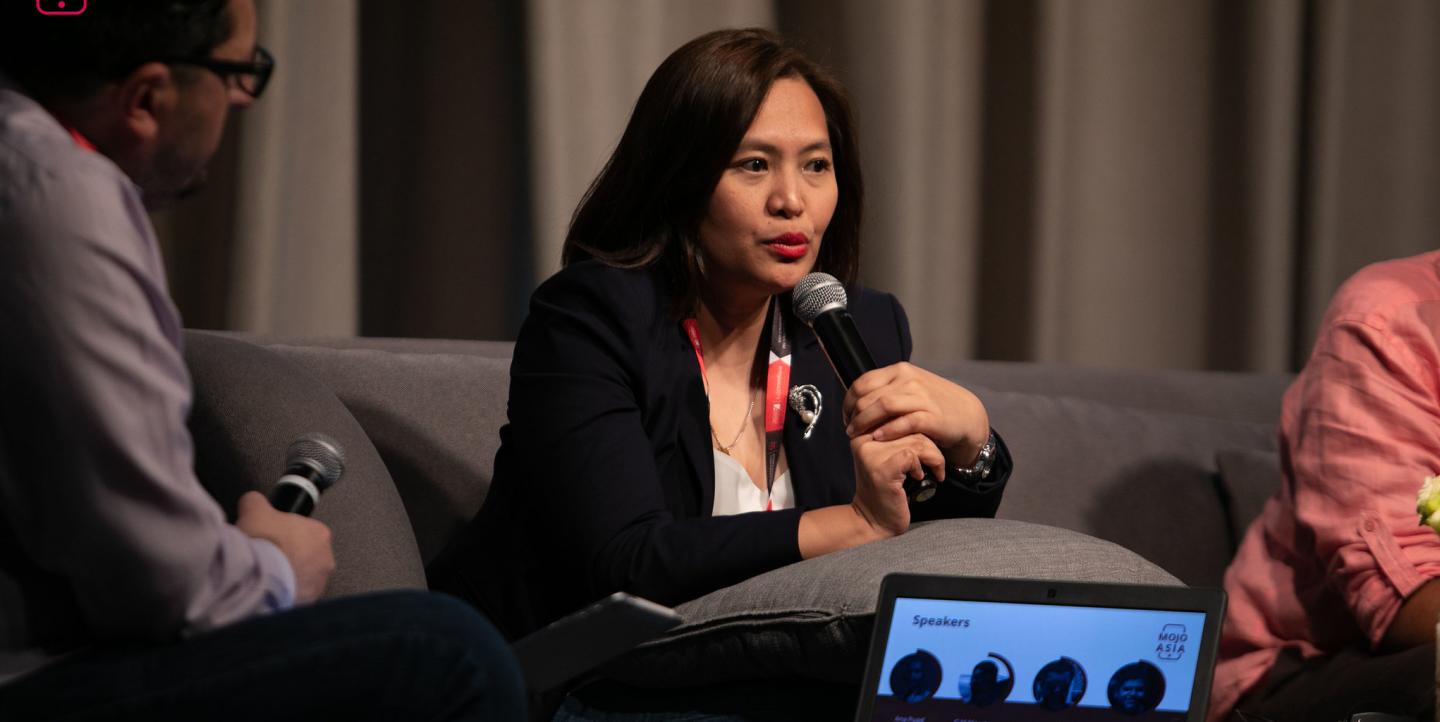Using smartphones for journalism is increasingly common, but few newsrooms have taken a leap into relying solely on mobile journalism (mojo). One newsroom that’s well on the way is News5 in the Philippines.
News5’s managing editor Ana Puod gave a masterclass on mobile-first newsrooms at the Mobile Journalism Conference Asia, which took place in Bangkok in June. Puod later spoke to IJNet about content creation, workflow, Facebook and more.
IJNet: How is your newsroom using mobile phones for content creation?
Puod: We carry out 50% of our news gathering and editing on traditional cameras, and the other 50% using mobile phones to shoot, edit, publish and broadcast video content. [Mobile content] is made up partly of organic mojo stories gathered by our reporters for our television channels and digital platforms. We also have a new social-first division called N5X, which focuses on stories shot and produced entirely on mobile phones.
We have [also] created a mojo-only workflow for reporters to research and write text pieces on their phones, and have them subbed by a digital editor in a chat-app group. This means they can work remotely and still break stories at the same pace as television or newspaper newsrooms.
We also receive reactions and suggestions in response to a particular story in real time from the audience, because they’re also online and on their phones.
What does that workflow look like, from going out on a story to submitting a finished piece?
Our reporters go out with a mojo kit consisting of a company-issued phone with data plan, a small tripod and microphones. They accompany a traditional camera crew. This team can go live at any time — on the phone via Facebook or the AviWest smartphone app, or via the TV camera using portable satellite equipment.
Reporters can also submit video and audio reports using Facebook, Skype or Viber and use their phones to edit packages to send to the office via email or upload straight to social media.
Emailed footage is received by our desk editors who input this into our Avid iNews system, where it can be accessed by our digital producers for conversion and publication to social and online platforms. The desk editors also check any facts in the story, and alert the reporter about a story by one of our competitors that they need to cover — all via messaging apps.

Have there been any challenges in integrating smartphone video into TV output?
The biggest challenge has been managing the quality of the video and audio files, especially as raw video and audio are sometimes shared several times between email and social apps before they go to air, and they can be compressed along the way.
To mitigate this, we use a video compressor, or ask the reporter to do the editing in the field.
If it’s a breaking story, we use whatever is available.
At a time when many newsrooms are rethinking video on Facebook, you’re uploading a lot of video content. Why?
The Digital 2019: Global Digital Overview report reinforced what we already knew: Filipinos are the heaviest internet users in the world, and recent research suggests one in every 5 Filippinos uses Facebook everyday to access news.
We also have evidence that our news consumers prefer to watch content than read or listen to a story, so while quote cards, infographics and text can give us engagement, videos are what are making money for us.
Our 1 billion views on Facebook and another 1 billion views on YouTube last year alone is a testament of how much our community appreciates our video content.
Which platforms are delivering positive monetization for News5?
We were aggressive at first on Facebook but it took a while before we made money there. Right now, we are particularly interested in YouTube as we find its monetization schemes more attractive than Facebook or Instagram.
The types of stories that make the most money for us are public service stories, political reports and feel-good or positive features.
In May, the Facebook algorithm was changed to favor videos over 3 minutes. How have you responded?
We have maintained the amount and duration of our posts. This has not caused any noticeable drop in views, but since the implementation of the 3-minute rule, we have [also] made it a point to produce specialized content that complies with this monetization requirement. This content can consist of cut-up segments from a raw interview, or a series of related videos — raw footage or voice packages — lumped together before we upload it to our online pages.
I’m interested in your policy of encouraging staff to do Facebook’s training courses to get better value from the platform.
Our head of News5 Digital, Bing Mallari Maano, has encouraged everyone to take these courses. Most staff just do basic courses, but we have additional course requirements for division managers who are in charge of monetization, ethics and media law implementation, analytics, technical operations and so on.
Initially, it was framed as “if you want to do this,” but now staff need to complete the course and obtain a certificate as proof of completion.
Since we do not have money to pay for expensive courses, we are always on the lookout for free courses, webinars and white papers. So we have also taken many of the Google News Initiative courses, and some of us have undertaken MOOCs at Poynter Online, Coursera, Edex and the Knight Center for Journalism in the Americas.
We have used lessons from these courses to craft our stylebook and news protocols, and this is kept constantly updated as new lessons come along.
Main image shows Ana Puod at the Mobile Journalism Conference in Asia.
All image Credit: Konrad Adenauer Stiftung Media Programme Asia

